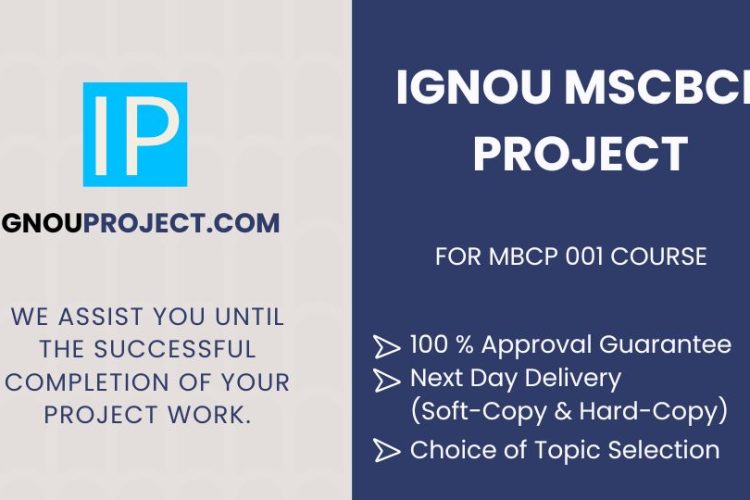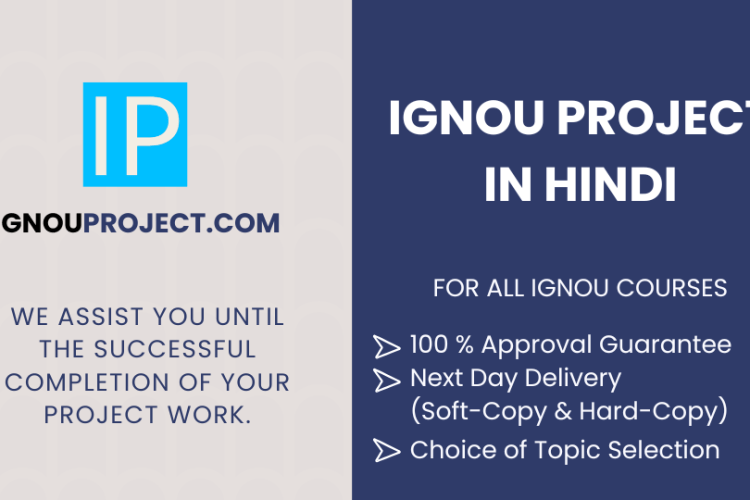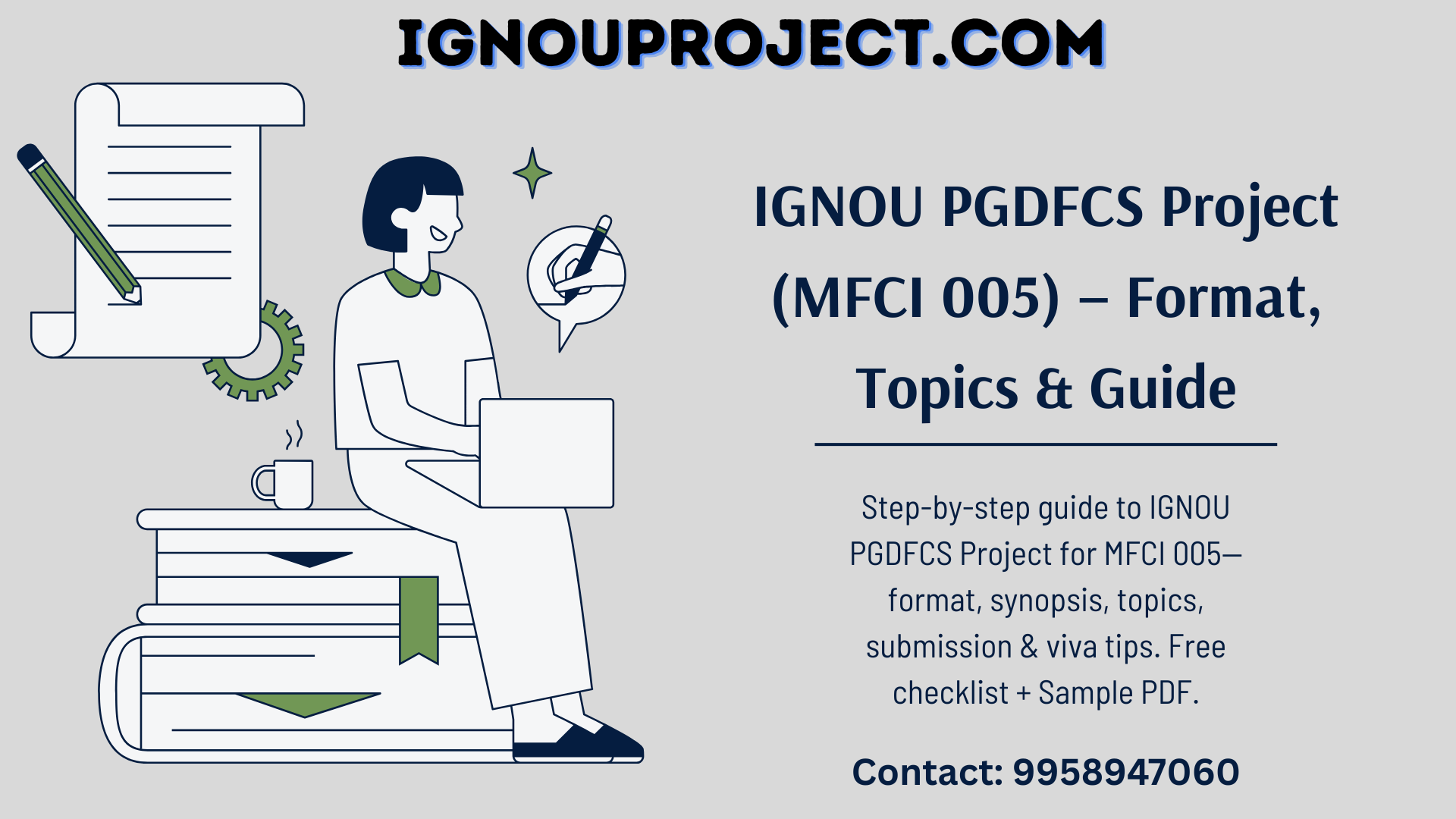
The IGNOU PGDFCS Project includes a mandatory project course coded MFCI 005 (also shown as MFCP-005 in some documents). This project involves field research on a folklore or cultural topic and a written dissertation. This MFCI-005 capstone project tests your research skills and understanding of cultural heritage. Below is a comprehensive guide covering the project’s format, topic selection, process, submission details, and viva voce preparation for the IGNOU PGDFCS project.
Key Highlights & Quick Summary:
- MFCI-005 Project (PGDFCS) – A compulsory 8-credit course where you conduct original folklore/cultural research and submit a dissertation.
- Format & Length – Dissertation of ~10,000–15,000 words (~80–100 pages) following IGNOU’s Project Format (title page, certificates, chapters, references, etc.). Proper formatting and binding are crucial for acceptance.
- Process – Choose a focused folklore topic, get your synopsis approved by a supervisor, conduct fieldwork (interviews/observations with consent), then analyze data and compile the report. Use plagiarism checks and get supervisor sign-off before final submission.
- Submission Deadlines – Typically 31st May (for June evaluation) or 30th Nov (for December). Submit as a hard copy (via Regional Centre or post) or via IGNOU’s online project portal (as instructed). Always keep proof of submission.
- Viva Voce – After submission, defend your work in an oral exam. Prepare to answer questions on your objectives, methodology, findings, and ethical steps. Practice a 3-minute summary of your project to confidently present it during viva.
Quick Overview — What is the IGNOU PGDFCS Project?
The IGNOU PGDFCS project is the final research component of the diploma, where you carry out independent study on a chosen folklore or cultural studies topic and document it in a formal report. It allows you to apply theoretical knowledge to a real-world cultural context through field research. Successful completion of the project (course code MFCI-005) is mandatory to earn the diploma.
Learning outcomes & credit weightage for IGNOU MFCI 005 project
MFCI-005 is an 8-credit course, reflecting the significant effort required. By completing it, you will:
- Develop research skills – formulate research questions, employ qualitative methods (e.g. interviews, participant observation) in a community setting.
- Gain fieldwork experience – document oral traditions, rituals or art forms directly from sources, using ethical practices throughout.
- Improve analytical ability – interpret cultural data and connect it with concepts from folklore and cultural studies.
- Hone academic writing – produce a structured report with proper citations and critical discussion of your findings.
MFCI vs MFCP Code — What’s the Difference?
You might see the project course referred to as MFCI-005 in some study materials and as MFCP-005 on IGNOU’s website. They are the same course. IGNOU updated the code to MFCP-005 (using “P” to denote project) when the MA Folklore program was introduced. Essentially, MFCI-005 (legacy code) and MFCP-005 (current code) are identical in content and requirements. Don’t be confused by the dual naming—just follow the IGNOU Project Guidelines, and rest assured you’re completing the correct course.
IGNOU PGDFCS Project Guidelines & Format (What to Follow)
IGNOU provides clear guidelines on how to format and organize your IGNOU PGDFCS project report. Adhering to these standards is important, as deviations can affect evaluation. Key format elements include:
Structure: Title page → Certificate/Declaration → Acknowledgements → Abstract → TOC → Chapters → References → Annexures
Your IGNOU MFCI 005 project report must include the following sections in order:
- Title Page – Project title, your name, enrollment number, program (PGDFCS), course code (MFCI-005), and submission year.
- Certificate & Declaration – A page signed by your supervisor certifying that the work is original, and a declaration by you that it’s your own work (as per the format given by IGNOU).
- Acknowledgements – (Optional) Thank anyone who helped in your project (e.g. informants, guide, institutions) in a few sentences.
- Abstract – A one-page summary of the study (briefly state the research problem, methods, and key findings).
- Table of Contents – List of chapters and major sections with page numbers (include list of figures/tables if any).
- Chapters – The main body divided into logical chapters (e.g., Introduction, Methodology, Analysis, Conclusion).
- References/Bibliography – A list of all sources cited in the report, formatted in a consistent style (APA, MLA, etc.).
- Annexures – Supporting materials like questionnaires, interview transcripts, consent form samples, photographs, maps, etc. (if applicable).
Ensure all these sections are present and properly formatted. Use a clear font (like 12-pt Times New Roman or Arial), double-spacing, and maintain standard margins. Number your pages and align chapter titles as instructed.
Printing, binding, submission channel (RC/online, as notified)
Follow IGNOU’s instructions for preparing and submitting the final report:
- Typing & Printing: It’s recommended to type the report (in English) for clarity. Use A4 size paper, with printing on one side of the page. A legible font and double-spacing make it easier to read. Check for any specific format instructions in your project manual (like margin size or font requirements).
- Binding: Use a professional binding for the final copy. Spiral binding with a plastic cover or softcover thermal binding is commonly accepted (avoid loose sheets or simple stapling). On the cover or first page, clearly mention “IGNOU PGDFCS MFCI-005 Project Report”, your name, enrollment number, program, and study centre.
- Submission Mode: IGNOU may instruct you to submit the project via hard copy or online. If hard copy, submit via your Regional Centre or mail it to IGNOU’s SED in New Delhi (address is given in guidelines). If online, upload a PDF on the official project portal (ensure it includes all components, and follow any file naming rules). Always adhere to the mode specified for your term – do not assume online submission is allowed unless announced.
- Proof of Submission: Whether you send a hard copy or upload online, keep evidence of submission. For postal submissions, use registered post/courier and save the receipt or tracking number. For online submissions, save the confirmation email or screenshot. This proof is vital in case of any dispute or delay.
(Note: Always check the latest IGNOU guidelines or notices for any updates on submission procedures, especially if IGNOU introduces changes like email submissions or specific portal requirements.)
IGNOU PGDFCS Project (Step-by-Step) Process (From Idea to Viva)
Tackling the IGNOU MFCI 005 project involves a series of stages.
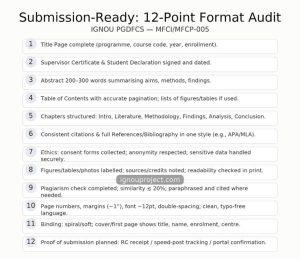
Figure: IGNOU PGDFCS Project in 7 Steps
Here’s a step-by-step breakdown from the initial idea to the final viva voce:
Topic selection (folklore genres, tribal studies, rituals, oral narratives)
Start with a well-defined topic. Focus on a specific community, genre, or tradition – for example, a particular group’s festival, a regional folk music tradition, a collection of local folktales, or an oral history of a community. Avoid choosing a topic that is too broad (e.g. “Folk Culture of India” is far too expansive). Instead, narrow it down to something you can cover in depth within one project.
Consider your own access and interest: topics that you are passionate about and can gather data on (perhaps in your region or language) are ideal. Also check that sufficient background information or prior research exists to support your study (so you have references for your literature review). If unsure, discuss potential ideas with your study centre or supervisor early on to ensure the topic is appropriate and manageable.
Synopsis writing & supervisor approval (scope, objectives, methods, tools)
Once you have a topic, prepare a project synopsis (~1000–1500 words) covering: a proposed title, an introduction (with your topic and its rationale), the objectives of the study, a brief review of relevant literature, and a description of your research methodology (where and how you plan to do the study, what tools you will use, etc.). You can also mention the expected outcome or a tentative chapter outline.
📌 For a visual guide and templates, refer to:
👉 How to write IGNOU Synopsis/Proposal?
Work closely with your supervisor on this synopsis. After your supervisor approves it, submit it to IGNOU for approval and wait for the go-ahead before proceeding to the final PGDFCS project.
Fieldwork & data collection (interviews, observation, audio/video documentation)
After approval, carry out your fieldwork according to plan:
- Engage with sources: Visit the community or context of your study and talk to multiple knowledgeable persons (storytellers, elders, performers). Attend events or observe rituals if your topic involves performances, to gather diverse perspectives.
- Use proper tools: Record interviews or performances with an audio recorder or video (with permission). Take photographs of relevant cultural objects or scenes if allowed. Keep a notebook for field notes to jot down observations, dates, names, and contextual details.
- Respect protocols: Always introduce yourself and explain the purpose of your study to participants. Use your consent form to get formal permission from interviewees. Some cultural information may be sensitive or sacred – ensure you have consent to document it and respect any boundaries set by the community (e.g. certain ceremonies might not be open to outsiders or photography).
Throughout your fieldwork, be observant and flexible. Sometimes you may discover new angles or information that could enrich your project – take note of these. Collect more data than you think you’ll need (within reason), because not everything collected will necessarily be used in the final report, but having a breadth of examples helps in analysis.
Analysis & Chapterization (thematic coding, transliteration, translation notes)
Once you have the raw data, it’s time to analyze and structure your findings:
- Transcription & translation: Transcribe your interviews and any recorded narratives soon after collection (transliterate into English script if they’re in another language). Then translate the relevant portions into English. This process helps you become intimately familiar with the content. You might include original language text in annexures and use English translations in your report for the reader’s benefit.
- Themes & organization: Identify key themes or patterns in your data and organize your chapters accordingly. For instance, you might devote separate sections or chapters to each major theme or aspect of your findings, following a logical flow from introduction to conclusion. Decide on a clear structure for presenting results (chronological, thematic, case studies, etc.) that best tells the story of your research.
- Link to theory: Interpret your findings in light of concepts and frameworks you learned in your PGDFCS coursework. For example, if you found variations of a tale in different villages, relate this to folklore theories about oral transmission. If a ritual is changing due to modernization, mention any cultural studies perspectives on tradition vs change. This connection to theory shows academic depth.
As you analyze, ensure each observation or quote you include serves a purpose in your argument. It’s often helpful to create an outline of chapters and subheadings once you identify your themes, then fill in with analysis and examples. This keeps your report well-organized and focused.
Drafting → Editing → Anti-plagiarism checks → Final submission
With analysis done, compile your PGDFCS project report and get it ready for submission:
- Draft and revise: Write a complete draft of the report, then proofread and edit it thoroughly. Ensure you have addressed all objectives, removed any redundant content, and corrected all language errors. Verify that every source is cited and listed in references. It often helps to set the draft aside for a day or two and then read it again, or ask someone else to read it, to catch things you might have missed.
- Originality & guide approval: Before finalizing, run a plagiarism check to ensure your work is original (rewrite or cite any borrowed content). Also, obtain your supervisor’s approval and signature on the project certificate page.
- Print & Bind: Prepare the final copy. Double-check page numbering and formatting one more time. Print your report (preferably laser print for clarity) and bind it as per the guidelines (spiral/soft binding). Make sure the printed copy is neat (no missing pages, smudges, or misalignments).
- Submit: Send or submit the project to IGNOU by the deadline. If you’re mailing it, use a reliable service and include a cover letter with your details and project title. If submitting through Regional Centre, follow their instructions (some require two copies – one for RC, one for HQ – so confirm in advance). Once submitted, your job is mostly done – the next step will be to attend the viva voce when scheduled.
Keep in mind, IGNOU evaluators typically take some time to assess the project. The evaluation is usually completed by the term-end result declaration. If your project is in order, you will be informed of the viva voce date (often at your Regional Centre) after the written evaluation.
Viva voce day: expected questions & tips
After the written work, you will face a viva voce (oral defense) for your PGDFCS project. Be prepared to briefly introduce your study and answer questions about your objectives, methodology, findings, and any challenges or limitations you encountered. Essentially, you should be ready to explain why and how you did the study, what you discovered, and how it contributes to understanding folklore or culture. Stay calm and confident; the viva is your chance to demonstrate that the work is genuinely yours and that you learned from the process.
Tips: Dress professionally and carry a copy of your project for reference. Listen carefully to the questions, and answer honestly and to the point. If you don’t know an answer, it’s better to admit it and perhaps offer how you might find it out, rather than guessing. Remember, the viva is generally a discussion – the evaluators want to hear you articulate what you’ve written.
IGNOU PGDFCS Project Topics (Fresh, High-Scoring Ideas)
Having a great project topic can make your work more engaging and impressive. Below are some fresh topic areas and examples that tend to score well, because they are specific and demonstrate depth in folklore/cultural studies:
Oral epics & performance traditions
- Document an oral epic (e.g., a local hero-saga or long folk ballad) by recording a live performance and analyzing its themes, style, and cultural significance in the community.
Tribal identity & cultural change
- Cultural preservation case study – Research how a particular group (say, the Gond or Konyak) is keeping traditional songs, dances, or crafts alive, and examine what pressures (modern education, technology, religion, etc.) are affecting those traditions.
Rituals, festivals, and material culture
- Festival ethnography – Document all aspects of a local festival (preparations, rituals, costumes, songs) in a community and interpret the symbolic meanings of each element, noting any changes in how the festival is celebrated today compared to the past.
Folk music/dance revivalism & marketization
- Revival project – Investigate an initiative to revive a nearly extinct folk music or dance form. Describe what steps are being taken (workshops, government support, fusion with modern styles) and analyze how effective these efforts are in sustaining the tradition and benefiting local performers.
Foodways, crafts, storytelling in digital spaces
- Culinary folklore – Study the traditional food practices of a region (for instance, the folklore around harvest dishes or festive sweets). Collect recipes, stories, or rituals associated with those foods and discuss how they reflect cultural values or community identity.

Figure: “Top 30 PGDFCS Project Topics”
(Feel free to tweak these ideas. The best project topics are ones you can gather first-hand information on and that you find genuinely interesting, as your enthusiasm will shine through in your work.)
Common Mistakes & Rejection Triggers in IGNOU MFCI 005 Project
Avoid these common errors that have tripped up students in the past:
Over-broad topics, missing consent, poor citation, weak methodology
- Topic too broad – A vague or overly expansive topic leads to superficial work. Narrow down your focus so your study remains in-depth and manageable.
- No consent or unethical data collection – Using people’s information or community knowledge without permission or cultural sensitivity can lead to serious issues. Always get informed consent and show respect; IGNOU can reject projects on ethical grounds if complaints arise.
- Lack of citation / plagiarism – Copying theory, background text, or any content from books or the internet without credit is plagiarism. IGNOU uses plagiarism checks and has zero tolerance for copied work. Always cite sources and use your own wording. Projects with significant plagiarism are outright rejected.
- Inadequate methodology – Not explaining how you did your research (e.g., how many interviews, why you chose them, what methods you used) can make your project seem unsubstantiated. A weak methodology section might cause evaluators to doubt your work’s validity. Provide a clear, step-by-step account of your research process.
Formatting lapses; late submissions; plagiarism
- Format & presentation issues – Missing sections or improper layout/binding, and messy presentation can lead to your PGDFCS project being returned for fixes. Follow all format instructions and present a neat, readable report.
- Missing the deadline – If you submit after the deadline without an official extension, your project evaluation will likely be delayed to the next term (meaning you won’t get your diploma in the current cycle). Plan backwards from the deadline and leave buffer time for unforeseen delays (printing issues, postal delays, etc.).
- High plagiarism – (Reiterating because it’s crucial.) Do not copy material without acknowledgment. Even excessive quoting of legitimate sources can be an issue if it dominates your work. Use plagiarism detection tools on your own draft and aim for originality. IGNOU may ask for a resubmission or fail the project if plagiarism is detected.
Being mindful of these pitfalls from the beginning will save you from heartache later. When in doubt, always refer to the official IGNOU Project Guidelines or ask your supervisor for clarity.
IGNOU PGDFCS Project Submission & Deadlines
Where/how to submit and verify status (RC & programme page)
IGNOU typically expects PGDFCS projects by 31 May (for June cycle) or 30 November (for December). You can submit the project as a hard copy (bound report via your Regional Centre or by post to IGNOU SED, Delhi) or online (via IGNOU’s project upload portal), depending on instructions for that term. After submission, use any provided acknowledgment or tracking to verify it was received.
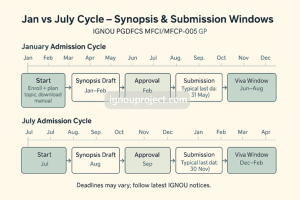
Figure: “Jan vs July Cycle – Synopsis & Submission Windows”
If you send your IGNOU MFCI 005 project by post, track the delivery online and confirm that IGNOU received it. If you submitted through the Regional Centre, you can call them after a couple of weeks to ensure they forwarded it. For online submissions, check for a confirmation message or email. Eventually, your project marks will be updated in your grade card (often around the time term-end results are declared). If results are out and your project grade isn’t showing, contact the Regional Centre or Programme Coordinator with your details and proof of submission to inquire.

Figure: “Submission-Ready: 12-Point Format Audit”
Keep proof of dispatch/receipt; checklist before submission
- Proof of submission: Always keep a receipt or acknowledgment (postal slip, email confirmation) as evidence of submission. This is your safeguard in case the project package is lost or misplaced – you can prove it was sent on time.
- Final checklist: Ensure your supervisor has signed the certificate, all required pages (from title page to annexures) are included and correctly ordered, and the project is properly bound and labeled with your details. It’s also wise to keep a photocopy or digital copy of the final report for yourself (you might need it for viva or in case you have to re-submit).
By covering these bases, you minimize any chances of administrative hiccups affecting your project evaluation. IGNOU has a large system, so being proactive and careful with submission will help your work reach the evaluators smoothly.
Viva Preparation for IGNOU MFCI-005 Project
15 likely viva questions (objectives, framework, limitations, ethics)
In the viva voce, examiners will ask questions to gauge your understanding of the PGDFCS project. Be prepared for questions such as:
- Why did you choose this topic for your project?
- What were the main objectives of your study?
- How did you conduct your research (methods)?
- Why were those methods appropriate for your work?
- Which literature or sources informed your research?
- What challenges did you face during fieldwork?
- What are one or two key findings from your study?
- How do your findings relate to what you learned or to existing studies?
- Were there any unexpected results?
- What are the limitations of your project?
- If you had more time, what would you do differently?
- How did you ensure ethical conduct in your research?
- How did you analyze the data you collected?
- How has doing this project enhanced your understanding of folklore/community?
- What is the main conclusion of your project?
Practice answering these clearly and concisely. Demonstrating confidence and clarity in your responses will show that you know your work inside-out. It might be helpful to conduct a mock viva with a friend: have them ask these questions randomly so you can get used to thinking on your feet.
3-minute project elevator pitch
It helps to prepare a very short summary of your PGDFCS project – an “elevator pitch” – to introduce your work during the viva (often the first question is “Tell us about your project”). In about 2–3 minutes, cover:
- Topic & Rationale – What you studied and why it’s important.
- Objectives – What you aimed to find out.
- Methodology – How you conducted the research (where, with whom, techniques).
- Key Findings – The most important discoveries or results.
- Conclusion – The main takeaway or insight from your study.
Practicing this concise summary ensures you hit all the main points smoothly. It sets a confident tone for the viva and helps the examiners quickly understand the essence of your project. Just be careful not to rush – speak clearly and with enthusiasm about what you did.
(Remember, the viva is as much an opportunity as it is an evaluation. You get to share what you learned and found fascinating in your research. So, treat it as a conversation about your passion project!)
Downloads Resources
Here are some useful resources to help you successfully complete the IGNOU PGDFCS project:
- IGNOU PGDFCS Project Synopsis Sample PDF
- IGNOU MFCI 005 Project Report Sample PDF
- IGNOU PGDFCS Project Topics Sample List
Using the above resources will help clarify IGNOU’s expectations and provide you with templates to follow, ensuring you don’t have to start from scratch on formatting or procedures.
FAQs in IGNOU PGDFCS Project for MFCI/MFCP-005
Are MFCI-005 and MFCP-005 the same course?
Yes. They refer to the same project in PGDFCS. MFCI-005 is the old code (in study materials) and MFCP-005 is the new code (in official listings). There is no difference in content or requirements.
How many words or pages should the PGDFCS project be?
Around 10,000 to 15,000 words, which comes to roughly 80–100 typed pages. This length is a guideline to ensure you cover all sections (introduction, methodology, analysis, conclusion) with adequate depth.
Do I need to get the IGNOU PGDFCS Synopsis approved?
Yes, absolutely. You must prepare a synopsis (project proposal) and have it approved by your supervisor (and often the IGNOU program coordinator) before you start the main report. IGNOU will not evaluate a project if the synopsis wasn’t officially approved.
What is the last date to submit the PGDFCS project report?
Generally, 31st May for the June term-end cycle, and 30th November for the December cycle. Always check the latest guidelines for any changes or extensions, but plan for these standard deadlines.
Where and how do I submit my PGDFCS project?
Submit a bound hard copy to IGNOU (SED, New Delhi) via registered post or through your Regional Centre, as instructed in your session’s guidelines. In some cases, IGNOU asks for an online submission – if so, you will upload a PDF on the specified portal. Follow the specific submission instructions given for your batch and keep proof (courier receipt or email confirmation).
Can I hire someone to write my IGNOU PGDFCS Project?
No. You are expected to research and write the project on your own. Hiring a service or submitting someone else’s work is against IGNOU’s rules and is considered academic misconduct. You can seek guidance or coaching, but the content must be your original work. IGNOU evaluators can usually tell if a student is not familiar with their own project in the viva.
Conclusion
Recap & Next Steps
The IGNOU PGDFCS Project for MFCI 005 course is your strongest proof of field-ready scholarship. Anchor your work in a clear objective, ethical field methods, and transparent analysis. Follow the official manual, keep meticulous logs, and rehearse a tight viva pitch.
In summary, the keys to success are: pick a focused topic, follow the prescribed format and ethical guidelines, carry out thorough fieldwork, and present your findings clearly. By doing so, you’ll meet IGNOU’s requirements and gain deeper insight into folklore and culture.
Now it’s time to apply this knowledge: finalize your topic, get your synopsis approved, and begin your fieldwork and writing. Work step-by-step (proposal, data collection, drafting, revision) so you finish on schedule. Remember to stay diligent and original — the process is demanding but rewarding. Good luck with your PGDFCS project!
